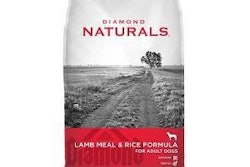
Despite the COVID-19 pandemic, pet food producers and ingredient suppliers expanded their operations in 2020 as the twin trends of premiumization and humanization drove demand. Pet owners increasingly view their animals as members of the family and buy products accordingly. The pandemic reinforced these trends. While many facility expansions were planned before the pandemic, the spread of the disease didn’t upend the pet food and treat industry. In 2020, pet food industry construction continued to build capacity and create employment.
“The demand for new pet food manufacturing or expanded facilities has grown substantially because of a market that’s responding to demand from consumers, who want to feed their pets the same kind of high-quality and safe ingredients that they feed themselves,” said Jeff Roy, senior project director for engineering, architecture and construction company CRB, “That’s why we’re seeing pet food manufacturers take notice and develop new products that increasingly require expansive renovations and new or additional capacity that, in turn, can accommodate new manufacturing methods and new products.”
In May, refrigerated pet food company FreshPet selected CRB to build the company’s third kitchen in Ennis, Texas. One phase, scheduled to open in fall of 2022, will provide 400,000 square feet of manufacturing space. Another 200,000 square feet will follow. When at full capacity, Freshpet estimated the Texas facility will have the capacity to produce enough pet food to exceed US$1 billion in total revenue by 2025. Employment will grow to more than 400, nearly doubling Freshpet’s local workforce.
Nature Gnaws, a Florida-based dog chew brand, announced plans to expand the company’s headquarters and warehouse by 6,000 square feet. The facility currently covers 26,000 square feet.
“COVID has forced us to look at our company and make operational changes for the better,” Lyndsi Stafford, chief bark-eting (sic) officer for Nature’s Gnaws, said. “We’ve upgraded our equipment, allowing us to do more work with less people in the warehouse. We continue to hire during this pandemic, but we are operating safely and efficiently.”
During the pandemic and before, pet food premiumization hasn’t been limited to dog and cat food companies. Bird owners too increasingly look for natural, organic diets, fueling growth for TOP’s Parrot Food, Gary Rubin, chief operating officer for TOP's Parrot Food said.
“TOP's Parrot Food's new facility has allowed our production capacity to triple so we can keep up with demand,” Rubin said. “In addition, our warehouse space has increased by five times from our previous location, which allows us to inventory more products and better serve our customers. Overall, the new space has provided room to continue to grow as a company.”
In September, Nestlé Purina PetCare announced plans to spend US$450 million to convert an old brewery into a dry dog and cat food factory in Eden, North Carolina, USA. The plant will produce Purina Pro Plan, Purina ONE and Purina Pro Plan Veterinary Diets. In the same month, the city government of Ripon California, USA asked for public comment on the environmental impact statement for the expansion of Diamond Pet Foods facility. The 366,000-square-foot pet food facility currently runs three production lines, which would be expanded to four within the same structure. Total production capacity would increase from 780 tons per day to 1,040 tons per day. In October, human and pet food maker GEA inaugurated its 10,763 square foot (1,000 square meter) Pet Food Experience Center in Galliera Veneta, Italy to foster cooperation, innovation and education among customers and industry partners.
Pet food ingredient suppliers expanding facilities
Further up the production chain, pet food ingredient suppliers have also expanded. In 2019, D&D Ingredient Distributors expanded their pre-mix facility in Delphos, Ohio, USA, which now includes a precision-automated micro-proportioning and a 4-ton twin-shaft horizontal ribbon-paddle mixer.
“The overall growth of the U.S. livestock, poultry, and pet food industry is the main driver of D&D growth and expansion in this sector,” Mike Wright, director of operations and business development, D&D Ingredient Distributors, said. “The growth of our custom premixing and other services for the feed and pet food industries follows their growth and success in meeting growing consumer demands. Of course, dogs and cats and other pets are much-loved members of families and households of all sizes and types. Today they’re benefiting from increasing specialization and product segmentation in the pet food industry.”
Continued growth in the pet food market also motivated Kemin Nutrisurance to make investments in equipment and facilities, said Alberto Muñoz, marketing director for the pet food ingredient manufacturer.
“More product demand means a higher level of finished goods that need testing to ensure consistent product quality and reliable resources,” he said.
In July, Kemin Industries broke ground on a US$8 million quality control laboratory at its worldwide headquarters in Des Moines, Iowa, USA. The 15,000 square foot lab will feature functional showcase labs exhibiting Kemin's analytical capabilities, used to check the company’s finished goods.
“The facility will test raw materials used in formulation to ensure safety from hazards such as dioxins, antibiotic residues and pesticides,” Muñoz said. “In addition, the lab will provide testing for finished goods to meet all product quality and safety specifications. The lab will be equipped with a range of analytical equipment and technology, such as gas chromatographs, HPLC, HPLC-MS, FTNIR and ion chromatography. We will also integrate a new laboratory information management system for automated data collection and traceability.”
Assuring quality ingredients will continue to be important as premiumization and humanization remain dominant trends in the pet food market, fueling facility expansion and construction.














